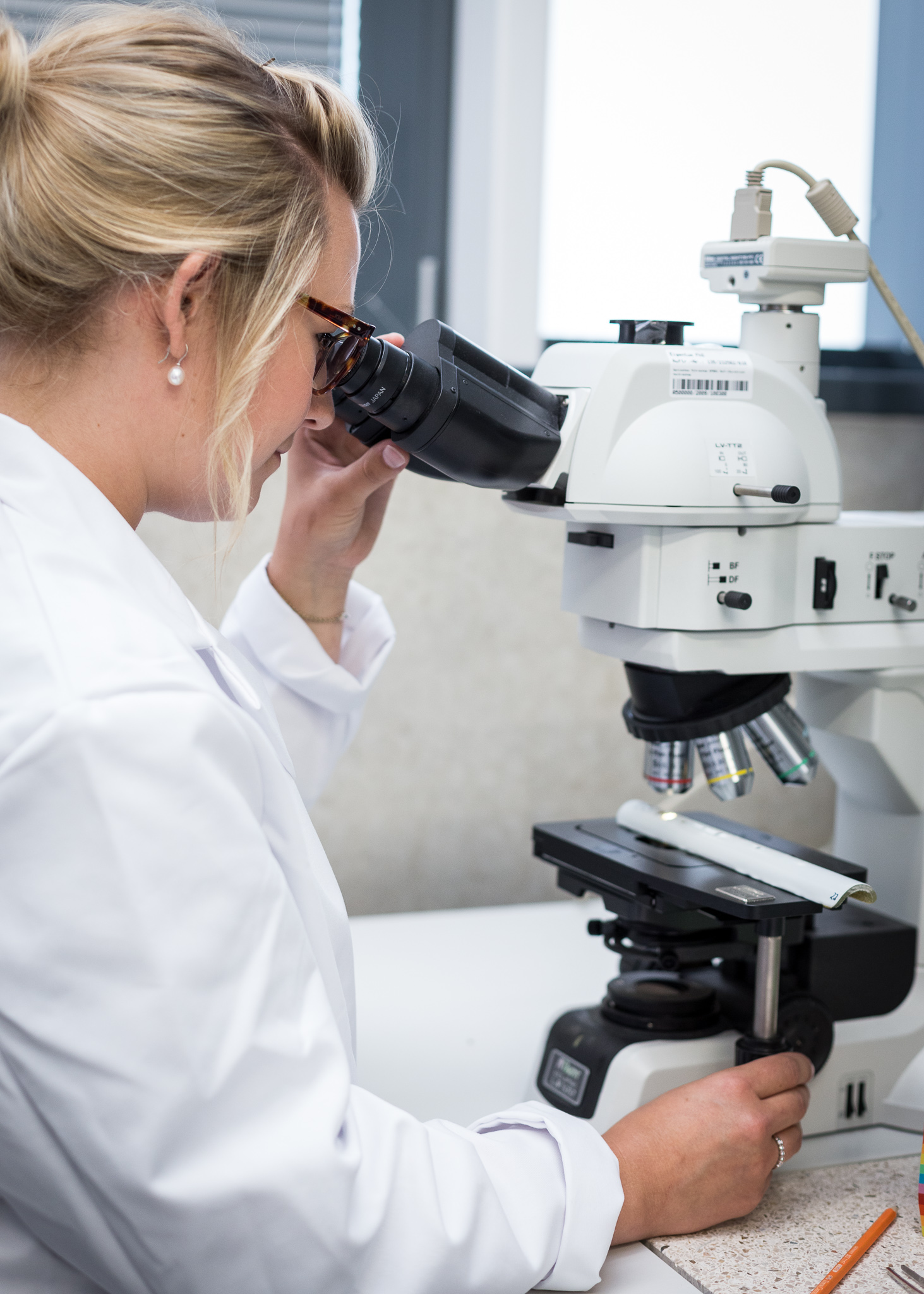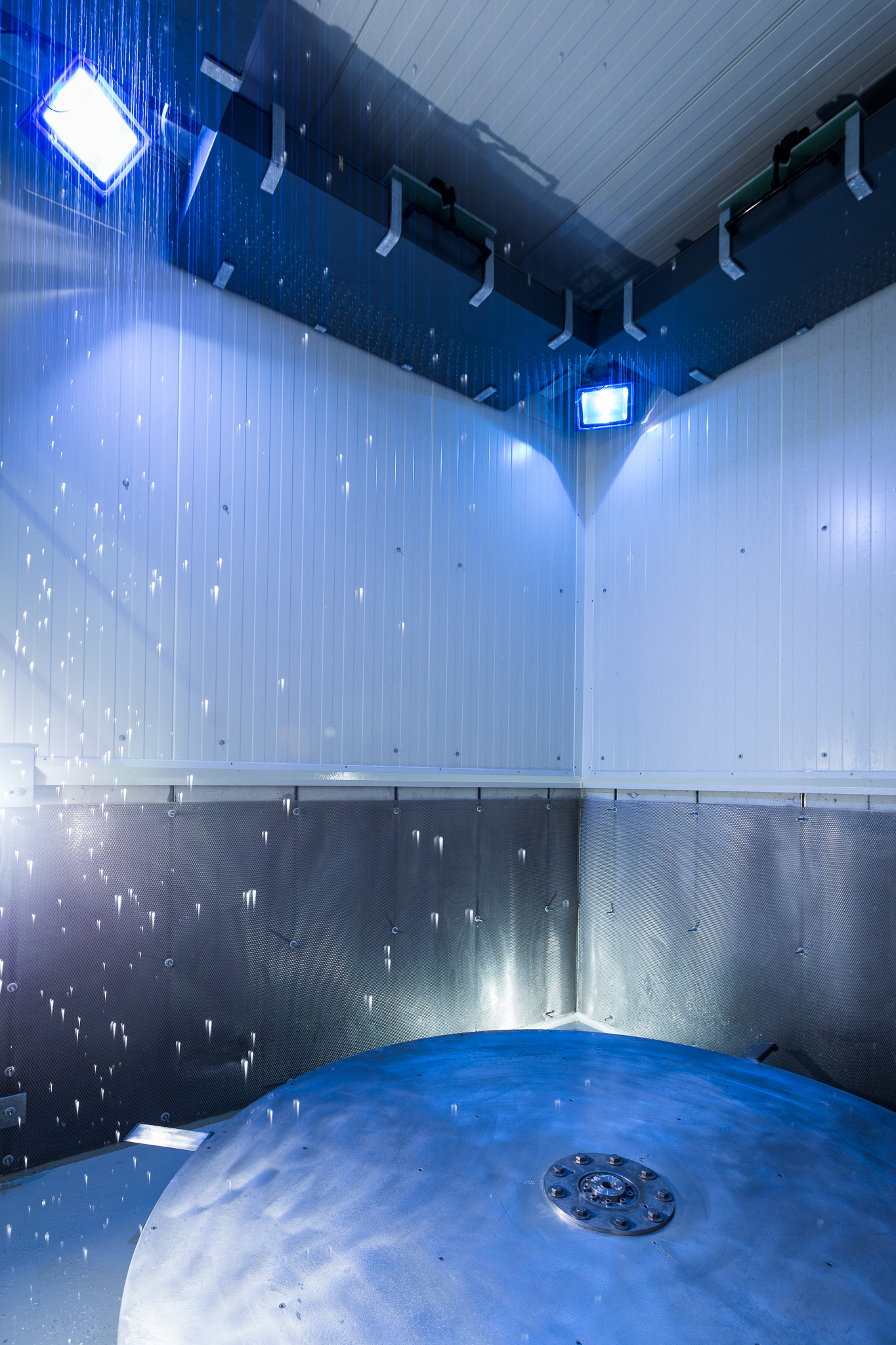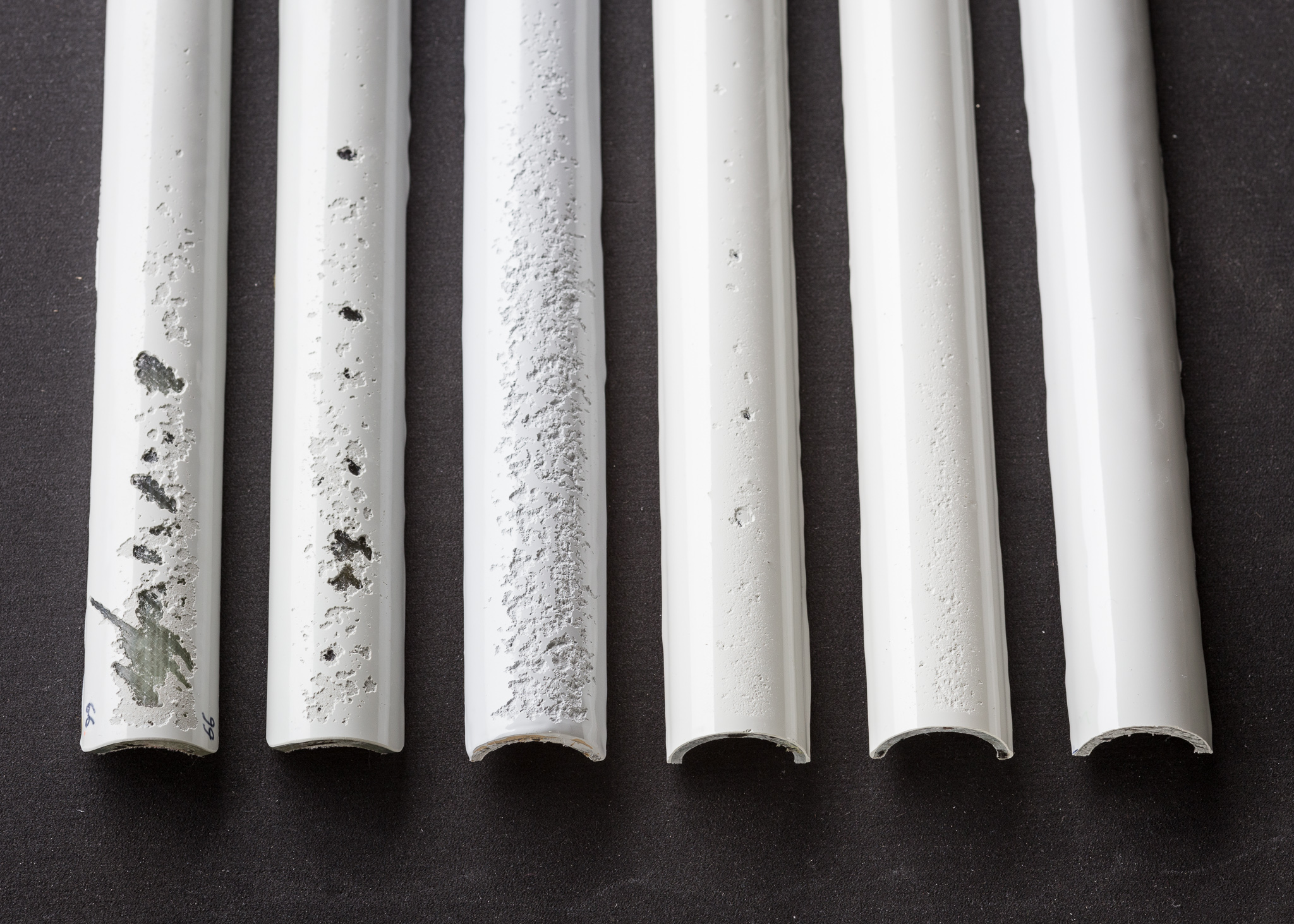Effective Prevention of Rain Erosion on Rotor Blades
Smalls drops, big impact: Even just minor rain erosion damage on rotor blade surfaces can impair performance and shorten the service life of wind turbines. Fraunhofer IWES has been operating a rain erosion test bench since 2015 in order to achieve a better understanding of how damage progresses and derive effective preventative measures. Within the scope of the newly started BeLeB research project the aim is to contribute to the development of reliable forecasting models for erosion damage and apply them to turbine operation. In particular, this also encompasses the assessment of practice-relevant repair concepts. To achieve these goals, the test bench is set up to enable continuous testing and precise damage documentation by means of high-resolution 3D images. Offshore operating data are used by way of comparison for validation purposes.
When operating, the wing tip of a wind turbine can reach speeds of 300 to 350 km/h and, as a result, rain drops and pollution in the air act like sandpaper on the surface of the material. Parts which are subjected to particular stresses, such as the leading edge of blades, are therefore finished with protective systems such as paint and coatings. The development and validation of a method for the accelerated service life analysis of coating systems helps to prevent turbine downtimes and loss of profits.
To this end, as part of the BeLeB research project (development of a method for determining the service life of rotor blade coatings), tests are performed on the Fraunhofer IWES test bench. These are compared against the measurement data from a long-term study of selected turbines on which a certain coating material is used. The comparison of damage progression on the test bench and damage documentation from operational offshore turbines guarantees that the test bench reproduces the most realistic conditions possible and that the effectiveness of protective mechanisms can be simulated reliably over accelerated time periods. This allows the development of practical preventative measures.
Drop impact system improves damage prognosis
Both the amount and size of the drops as well as the timing and frequency of their impact can be regulated precisely on the rain erosion test bench. Moreover, over the course of the 3-year BeLeB project, a drop impact system will measure exactly where the drops hit and the damage they cause. The entire test bench is modeled for this with the aid of a CFD simulation. A laser-based inspection system and a high-speed camera are used to document the damage, whereby both the topology of the sample and damage in the micrometer range are recorded. The development of an adequate material and damage model will improve understanding of the processes at material level. For material suppliers, both these aspects are of great interest for rotor blade production so as to enable them to adapt their products to the practical requirements in the best possible way.
Automatic inspections shorten the testing periods
Continuous testing is possible thanks to the use of a laser-based automatic inspection system. The throughput of material samples increases and reliable results can therefore be achieved in shorter testing times.
“Current automatic inspection systems in rain erosion test benches do not allow for detailed damage assessment and therefore reach their limits when it comes to deducing reliable damage models. In the BeLeB project we will be taking our test bench to the next level in order to provide effective support for the development of a reliable damage model,” explained Benjamin Buchholz, Project Manager at Fraunhofer IWES.
Assessment of coating applications, improving repairs
The project partners aim to achieve a further procedural improvement with an ultrasound-based method to establish the quality of coating application. After all, the product can only develop its full protective effect when it is ensured that application can be performed precisely. The repair process in the field is also supported in order to identify optimization approaches. To this end, damaged material samples are repaired in the climate chamber under environmental conditions and the various procedures are compared.
The goal of the project partners is to improve the effectiveness of known protective mechanisms for rotor blades tangibly. They hope this will reduce the time and money invested in repairs and maintenance. This would represent a major step forward in ensuring the improved profitability and thus enhanced competitiveness of wind energy. The provision of effective rain erosion protection is not only of great interest to operators and maintenance companies, but also to suppliers of protective systems and manufacturers of matrix resins and gel coats.
Partners: Blade Care, DWT, Fraunhofer IWES (coordinator) Fraunhofer IZFP, FreiLacke, Jadewind, Nordex, Ocean Breeze, Senvion
Term: 3 years
Budget: EUR 2.38 million
Funding code: FKZ 41V7647


Last modified:
